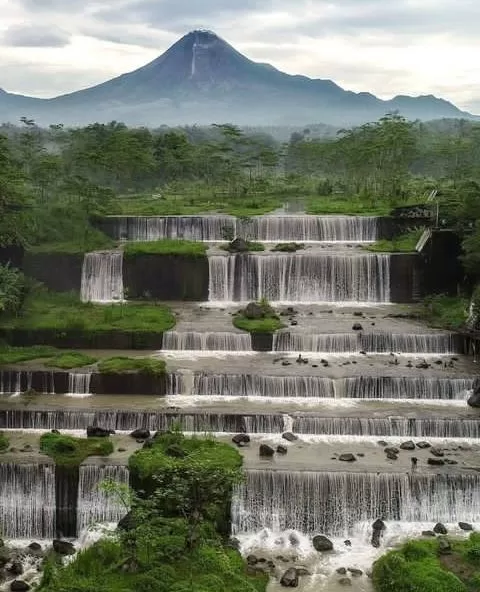Indonesia Java is one the provinces in Asia with lots of attractions that travelers and visitors to visit and explore for its interesting and fascinating attractions.
Is Java related to Indonesia? Is Bali part of Java?
One of Indonesia’s Islands that most travelers visit for the feel of the Indonesian culture is Java. Also spelled Djawa or Jawa, it lies on the southeast of Malaysia and Sumatra, south of Borneo (Kalimantan) and west of Bali. Java is home to roughly half of Indonesia’s population and dominates the country politically and economically. The capital of Java and of the country is Jakarta (formerly Batavia), which is also Indonesia’s largest city.
Recommended reading… See where Indonesia is located on the map
In terms of administration, Java is composed of three provinces which comprises of West Java (Jawa Barat), Central Java (Jawa Tengah), and East Java (Jawa Timur) as well as Jakarta Raya (Greater Jakarta) daerah khusus lbukota (special capital district) and Yogyakarta daerah istimewa (special district), both of which are administratively considered provinces.
Java is highly volcanic, yet serious eruptions are few; only 35 of its 112 volcanoes are active. In the west the volcanic peaks are clustered together, becoming more widely spaced in the central and eastern parts of the island. The highest volcano is Mount Semeru, at 12,060 feet (3,676 metres). A series of discontinuous plateaus lies south of the volcanic belt and reaches an elevation of about 1,000 feet (300 metres).
The various rivers in Java run northward, since the central mountains that form their watershed lie somewhat closer to the southern than to the northern coast. Some rivers do run southward, however. The largest rivers on the island are the Solo and the Brantas, in Java’s eastern portion. Those and many smaller rivers are a source of water for irrigation but are navigable only in the wet season, and then only by small boats.
The climatic condition of Java is generally hot and humid throughout the year. Maximum temperatures are found in the plains along the northern coast, but in the mountains it is much cooler. The high humidity often makes the climate debilitating. The northwest monsoon season, from November to March, is rainy and cloudy, while the southeast monsoon, from April to October, brings some rain but generally is sunny.
Java’s rich vegetation is southern Asian, with Australian affinities; more than 5,000 species of plants are known. Dense rain forests abound on the damp slopes of the mountains, while thick bamboo woods occur in the west. The island’s fruit trees include banana, mango, and various Asian species. Teak, rasamala and casuarina trees and bamboo occur in forest stands, together with sago palms and banyan trees. Teak wood is one of Java’s major exports.
The island is also home to monkeys, wild pigs, and crocodiles; about 400 species of birds; 100 species of snakes; 500 species of butterflies; and many types of insects. There are also one-horned rhinoceros and wild ox (banteng) in the remote areas of the Island’s fauna.
Java is one of the world’s most densely populated areas. ava’s rate of population growth has remained quite high; from an estimated 5 million people in 1815, the population had grown to roughly 140 million in the early 21st century. Most of Java’s population remains rural, but its cities have nevertheless grown at a rapid rate. The chief cities are Jakarta, Bandung, Semarang, Surabaya, Surakarta, and Yogyakarta. The rural population density is highest in the south-central plains and the northern plain.
The inhabitants of Java include three major ethnic groups, the dominant Javanese, the Sundanese, and the Madurese and by two smaller groups, the Tenggerese and the Badui. The Javanese constitute approximately 70 percent of Java’s population and live primarily in the central and eastern portions of the island. The Sundanese live mainly in the west, while the Madurese live in the east and on Madura Island. All three groups speak Malay languages, and most are Muslims.
What is Java Indonesia known for?
To the travelers and tourist point of view, Indonesia’s Java is the point of attraction to experience and explore the country’s culture. Among the interesting attractions in the province include the following;
See the top 21 Tourist sites in Indonesia
- Trans Studio Bandung
Trans Studio Bandung is a shopping mall, amusement park, and hotel in Bandung, Indonesia. Trans Studio is built on a land with size of 4.2 hectares. Trans Studio Bandung is an indoor theme park in West Java with modern technology, strategic location, and fun rides, perfect for all ages.
- Merapi Volcano
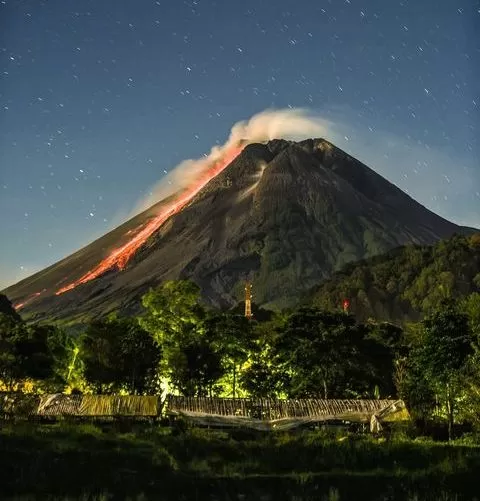
Mt Merapi, located near Yogyakarta, is one of the most active volcanoes on earth. It is one of some 500 volcanoes in Indonesia, from which at least 129 are active in the volcanic arc spread along the Asia-Pacific islands called the Ring of Fire. Living in the shadows of an active volcano is like sitting on a time bomb, especially when it is called the Fire Mountain or Mount Merapi, the volcano that dominates the center of the island of Java.
Despite its frequent eruptions, Mt. Merapi is very central to the lives of the Javanese people and kings. For through its eruptions Merapi spews lava, ash, and minerals to the surrounding areas. These provide nutrients to the soil, making this one of the most fertile areas in the world, and consequently the most densely populated.
This majestic, perfectly cone-shaped volcano, with its peak at 2,911 meters above sea level, has also determined the lives of kings and realms. In the early 11th Century, the once-mighty ancient empire of Mataram mysteriously disappeared, and power suddenly shifted to East Java. Scientists surmise that a violent eruption of Merapi in 1006 AD was the ruin of the empire.
This massive eruption also buried the nearby Borobudur temple in ash. Most recently at the end of October-beginning November, Merapi erupted catastrophically killing 353 people mostly by its Pyroclastic flows, the worst ever after the one in 1870.
Since then the mountain has been quieter, but the people here have befriended the mountain and accept its rumblings and coughs as part of normal natural phenomena.The Merapi volcano also plays a central part in the accepted cosmos of the Javanese sultans. The Keraton of Yogyakarta faces the mountain in one direct line. Merapi is also guarded by spiritual “guards” who give offerings to the mountain.
Local people respect the awesome power of this volcano. Annually, on the anniversary of the Sultan’s coronation, offerings (Labuhan) are brought from the Keraton of Yogya to Mt. Merapi, together with similar offerings carried to the Indian Ocean to the south, to appease the spirits of the mountain and the sea, in order to bring welfare to the inhabitants of Java.
Today Merapi is continuously monitored by a number of earthquake posts that warn inhabitants of imminent eruptions. Nonetheless, despite frequently giving out smoke, the mountain still attracts hikers and climbers and lately adventurers who love to retrace the hot lava flow of the last eruption, although now the lava has cooled down considerably.
Whether you are a professional or avid vulcanologist, or love the adventure of climbing or riding in off-road jeeps up dangerous slopes of Merapi, you can learn about volcanoes at Museum Merapi, get awestruck by mighty Mt. Merapi at the Kaliurang Observation Tower, take an Adventurous Lava Tour at Kaliadem and so on.
- Tunjungan Plaza
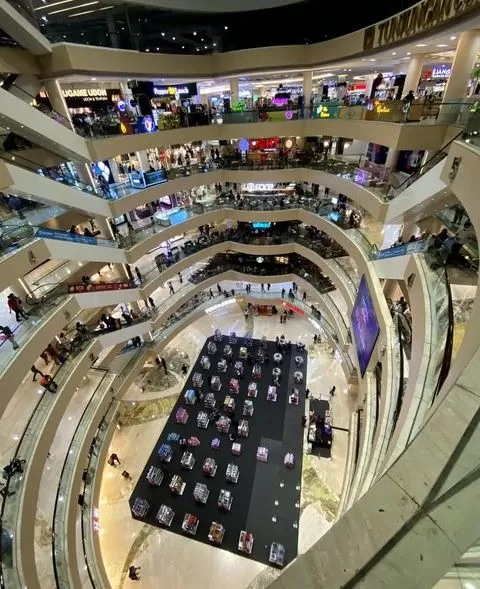
Tunjungan Plaza, a leading retail mall since 1986, is located in the heart of Surabaya and has become an iconic shopping center ever since. Tunjungan Plaza consists of six extended malls on a site more than 175,000 square meters and has more than 600 outlets.
Tunjungan Plaza is the first modern shopping center and superblock in Surabaya developed by PT Pakuwon Jati, Tbk. which is easily accessible and has strengthened Tunjungan Plaza as the absolute destination for entertainment and shopping center (The Plaza and The Gallery), business and offices (Pakuwon Center and Pakuwon Tower), hotels (Sheraton Hotel and Tower and Four Points), and the most modern and luxurious residential space (The Peak Residence and One Icon).
With an impressive and modern design, Tunjungan Plaza https://tunjunganplaza.com/ is home to many international brands such as Hugo Boss, Tory Burch, Omega, Coach, Michael Kors, Aigner, Under Armour, including two anchor departement stores: Matahari Departement Store and Sogo. We are also welcomed Dior, Make up Forever, Gioi, Saladstop!, Max Fashion, and Garmin recently. In a near future, high-brand such as Hermes and Chanel will also be the part of Tunjungan Plaza.
Tunjungan Plaza provides visitors with a truly enjoyable experience which extends beyond shopping and dining. Large-scale of international and local cuisine including Toby’s Estate, Mr. Fox, Liberica, Pasarame, Seigo, and Djournal Coffee are great hangouts for casual diners to relax.
Supported by famous anchor tenants such as Informa, Uniqlo, H&M, Cinema XXI and IMAX, ACE Hardware, Hero Supermarket, as well as hundreds of specialty shops, Convention Center, and four main atriums, Tunjungan Plaza offers one-stop shopping and entertainment which will bring a new shopping experience for the customers.
- AEON Mall BSD City
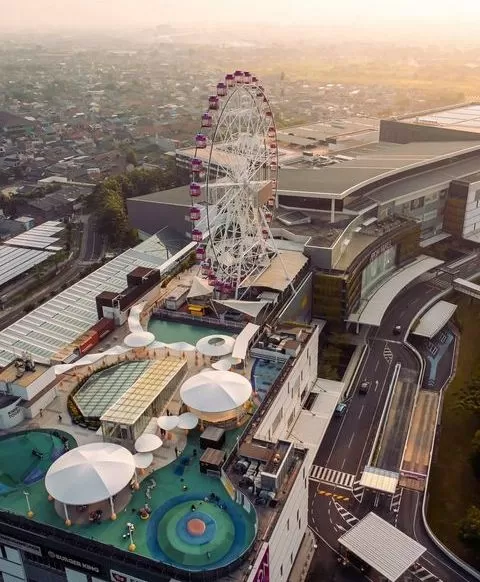
Aeon Mall is Japan’s largest shopping mall developer and operator. In Indonesia, Aeon Mall is managing the business through PT. AMSL INDONESIA. Aeon Mall BSD City provides shoppers with up to 150,000 square meters of land, filled with approximately 280 tenants, with ample parking on a 10-hectare site.
The mall features shopping mall with home & fashion stores, a supermarket, an informal sushi restaurant & a cinema.
- Bromo Tengger Semeru National Park
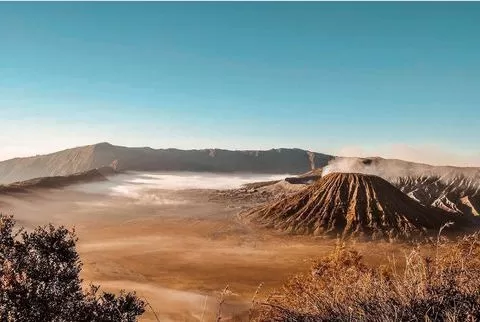
Being the largest volcanic region in the province, Bromo Tengger Semeru National Park covers a massive area of 800 square km in the center of East Java. Visitors who have an eager interest in volcanic activities must come to the park and witness the smoke of ashes coming from Mount Semeru, an active volcano that rises 3,676 meters above sea level.
Bromo Tengger Semeru National Park is the only conservation area in Indonesia that has a 10 km sea of sand called Tengger, from which four new volcanic cones have emerged. Those volcanic cones are Mount Batok (2,470 m), Mount Kursi (2,581 m), Mount Watangan (2,661 m), and Mount Widodaren (2,650 m). However, Mount Bromo is still the only one that is active. Temperatures at the top of Mount Bromo range about 5-18 degrees Celsius. Heading south of the park is a rolling upland plateau divided by valleys and decorated with several scenic lakes reaching to the foot of Mount Semeru.
- Bogor Botanical Gardens
The Bogor Botanic Gardens, Indonesia’s first and foremost botanic garden, is 87 hectares of beautifully kept trees, plants flowers, lawns and ponds within a busy expanding city of 1 million people. It is also a world famous institution for research and conservation that has developed over many years and is continuing to do so.
The Garden is an important part of Bogor city providing not only employment but a large ecotourism area for local residents, visitors from Jakarta and many passing tourists from abroad. The Garden also provide healthy air from its 12,300 plant specimens representing 3170 species, not included specimens in its nurseries.
- Lawang Sewu Building
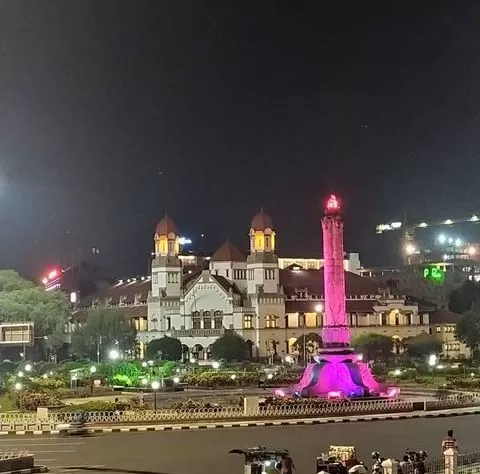
Abandoned and antique buildings have a tendency to inspire stories of legends, myths, haunted tales of the building’s origin, its owners and builders. Indonesia as a whole is home to numerous historical and mystical buildings, many antique and dating back hundreds of years.
One such building is Lawang Sewu which was built by the Dutch between the years 1904 and 1907 and functioned as head office for The Dutch East Indies Railway Company (Nederlandsch Indische Spoorweg Maatschappij) until 1942. During World War II, the building was used as Japanese Military Headquarters. It is located on the Tugu Muda roundabout, in Semarang, capital city of Central Java.
Lawang Sewu in the Javanese language is translated to mean “a thousand doors”. And while the building does not really have a thousand doors, the massive, three-story structure is lined with numerous doors and windows that resemble doors, from which the building obtained its name. This large and mysterious building is not simply a deserted structure, but is an icon of history and heroes.
On October 14, 1945, shortly after Indonesia declared her Independence, the building became the scene for the bloody “Battle of Semarang”. The 5-day battle took place between AMKA, Angkatan Muda Kereta Api (Railway Youth Force) against the Kempeitai and Kidobutai, the Japanese Military Police and Strike Force. Many were tortured and executed during this battle. In 1950, the Tugu Muda monument was built in remembrance of this fight for freedom and in honor of those who died in battle. Each year, a celebration is held around this monument in commemoration of the heroic, 5-day struggle at Lawang Sewu.
- NuArt Sculpture Park
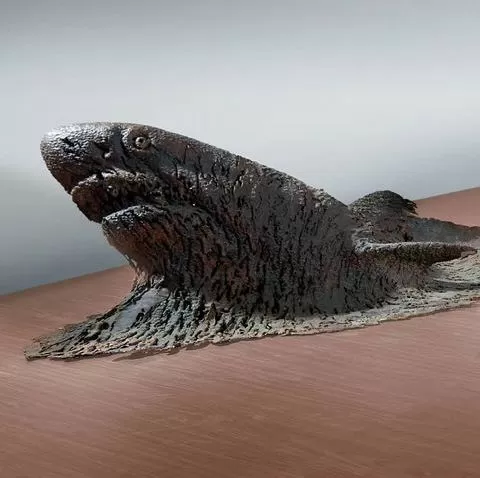
NuArt Sculpture Park primarily exhibits the works of the sculptor Nyoman Nuarta that spans from the beginning of his career to the latest masterpieces. The 3 hectares Park was specifically designed to nurture the development of Indonesian art, design & culture.
- Ijen Crater
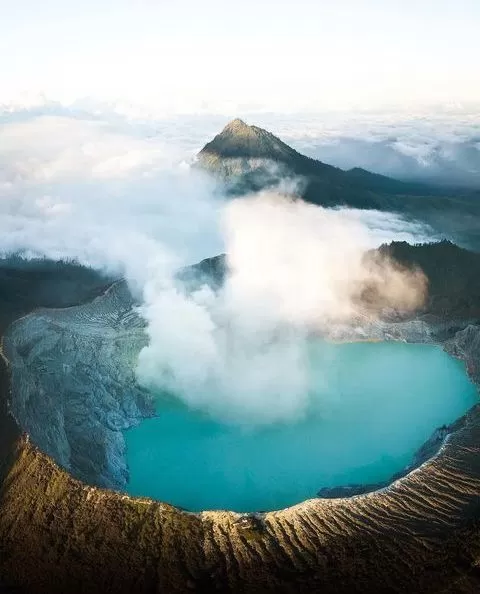
The Ijen volcano complex is a group of composite volcanoes located on the border between Banyuwangi Regency and Bondowoso Regency of East Java, Indonesia. It is known for its blue fire, acidic crater lake, and labour-intensive sulfur mining.
- Dusun Bambu Family Leisure Park
Dusun Bambu Family Leisure Park is an integrated Eco and Cultural Tourism Destination in West Java, Indonesia.
Located just outside of Lembang, in the highlands and featuring fresh air, a natural environment and panoramic views, the Site provides a welcome escape from the hustle and bustle of hectic city life in Greater Bandung and Jakarta. The Site’s diverse, nature inspired and culturally sensitive programme of activities is highly family oriented and attracts just over a million visitors annually.
- Museum Batik Danar Hadi
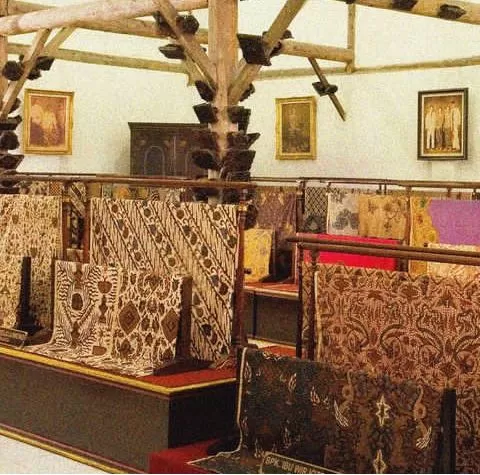
Situated in the historic Ndalem Wuryaningratan compound–once the home of a Javanese princely family–in Danar Hadi’s home town of Solo, The House of Danar Hadi is testament to Danar Hadi’s unwavering commitment to preserve and disseminate the history and art of Batik for the general public. This vast cultural compound, which opened in 2008 has received numerous accolades and is regularly rated as the top destination in the city of Solo, Central Java.
The highlight of the complex is a museum which contains more than 700 curated pieces out of the 10,000 pieces of batik in the collection of Danar Hadi’s founder, each coming from different cultural influences and time periods such as Chinese, Indian, Dutch, as well as from various regions throughout Indonesia.
- Paris Van Java
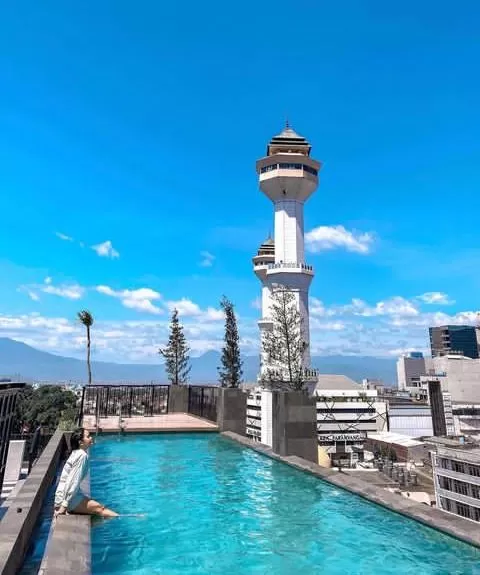
One of a kind shopping centers in Asia, which blends Mediterranian architecture and lush greenery into a unique and memorable experience for all ages is the Paris Van Java.
Revel in an immersive shopping spree with world-renowned brands and creative entrepreneurs. Savour the tastes of the world while dining under the stars. Relish the beauty of nature in Paradiso and immortalize your visit enveloped by luscious flowers and exotic ambiance.
- Braga Street
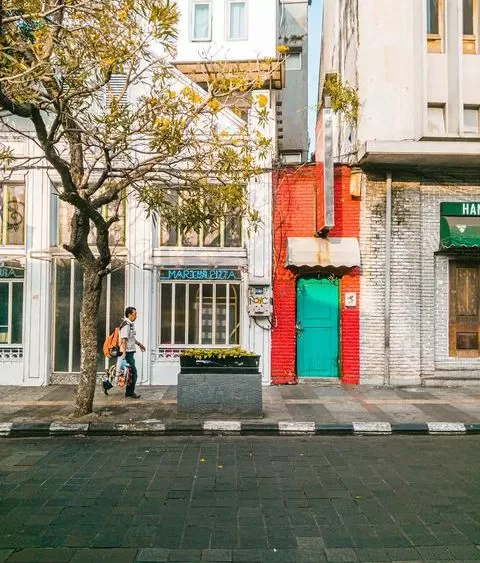
Braga Street is a street in the center of Bandung, Indonesia, famous in 1920s colonial Indonesia as a promenade street. A European ambiance of chic cafes, boutiques, and restaurants along the street propelled Bandung to attain the Dutch nickname Parijs van Java
- Museum Angkut
Museum Angkut is a transport museum located in Batu, East Java, Indonesia and located on hillside of Mount Panderman, part of Mount Kawi-Butak. The museum has more than 300 collections of types of traditional to modern transportation.
- Ullen Sentalu Museum
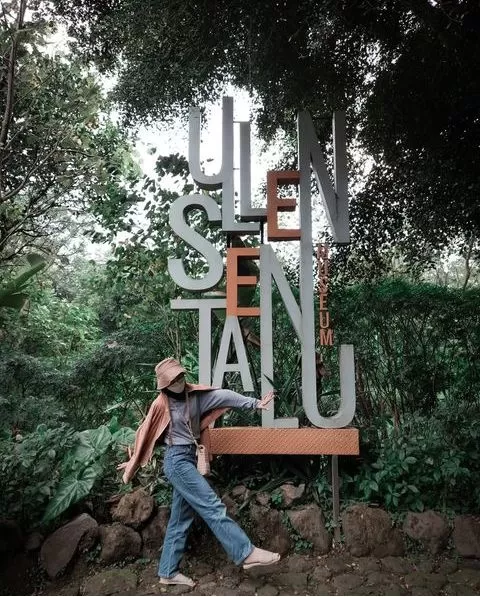
The Ullen Sentalu Museum is a Javanese culture and art museum located in Kaliurang highland, Yogyakarta, Java, Indonesia. The museum displays relics and artifact from royal houses and kratons of Java, such as Yogyakarta, Pakualam, Surakarta, and Mangkunegaran.
- Summarecon Mal Serpong
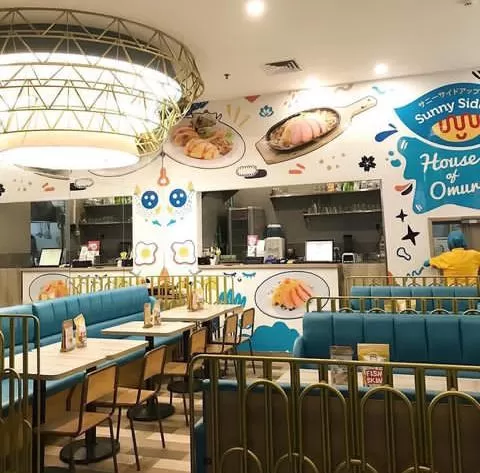
Inaugurated on June 28, 2007, it is a unique, majestic, and luxurious shopping center that can deliver a more pleasant shopping experience than usual for the people of Serpong, Tangerang, and surrounding areas. SMS stands on an area of 50,000 m2.
The presence of SMS since its first phase in the Serpong area in mid-2007 has proven to have succeeded in transforming the lifestyle of the Serpong community. The success of Downtown Walk has become an icon of people’s lifestyles, and has even inspired other entertainment centers in the Serpong and Jakarta areas. With Summarecon’s experience in developing Mal Kelapa Gading for more than 25 years, it is believed that SMS will continue to develop gradually as happened in Kelapa Gading. In the end, the presence of this facility actively supports Summarecon’s mission in developing the Summarecon Serpong area into a valuable area, as well as increasing business turnover in this area as well as providing integrated facilities to the people of Serpong and its surroundings.
Salsa Food City (SFC)
Inaugurated on September 23, 2004, it features a relaxed-looking building design, suitable for visitors who want to relax to enjoy food and drinks with friends, relatives and family. Salsa Food City carries a family food court that serves 50 variations of local Indonesian food. With an area of 3,500 m2, Salsa Food City provides more than 800 seats and consists of 20 restaurants and 6 islands. For entertainment every night, the Salsa Food City stage features live music to entertain the visitors and add comfort while dining in the open area.
Sinpasa Modern Market
Is a traditional market that is packaged with a modern concept that stands on a land area of 4,000 m2 and was inaugurated on September 23, 2004 to meet the needs of residents in the Summarecon Serpong area and it surroundings. Sinpasa market was built with a very good concept, referring to modern market standards that are clean and safe. Sinpasa market consists of 142 traders in the category of kiosks and stalls, who sell various types to meet the needs of clothing, food, basic necessities, medicine, and even gold jewelry for the community, especially in the Summarecon Serpong area and its surroundings.
- Mount Semeru Volcano
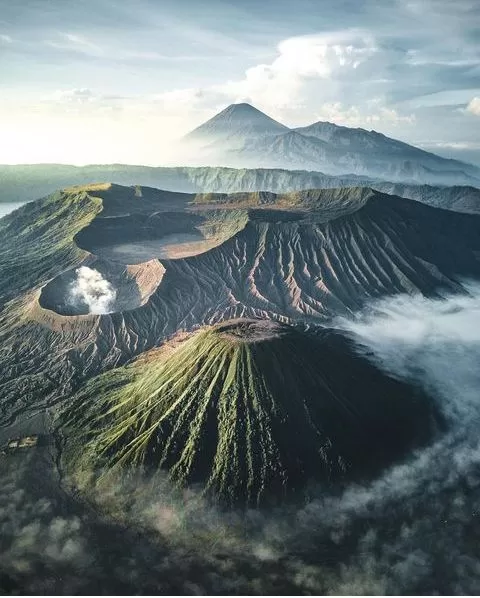
Being one of the most popular destinations in Indonesia for hiking, Semeru, or Mount Semeru (Indonesian: Gunung Semeru), is an active volcano in East Java, Indonesia. It is located in a subduction zone, where the Indo-Australian plate subducts under the Eurasia plate.
It is the highest mountain on the island of Java. The name “Semeru” is derived from Meru, the central world mountain in Hinduism, or Sumeru, the abode of gods. This stratovolcano is also known as Mahameru, meaning “The Great Mountain” in Sanskrit.
Semeru rises steeply above the coastal plains of eastern Java. Maars containing crater lakes have formed along a line through the summit of the volcano. It was formed south of the overlapping Ajek-ajek and Jambagan calderas.The eruptive products are andesitic. Semeru lies at the south end of the Tengger Volcanic Complex.
- Central Java Grand Mosque
The many newly-built mosques in this part of the world have evolved to become great monumental structures, which were initially basic, simple and rudimentary structures. Even so, some the newly-built mosques remain purely as a place of worship, without being utilised fully as it had been done by the Prophet Muhammad PBUH in the AI-Masjid AI-Nabawi in Madinah .
With the Prophet ‘ s guiding principle in proposing the building of this mosque , the Central Java Province authority initiated a mosque design competition aimed at re-living the glories in the same spirit as when the Prophet Muhammad PBUH first built his mosque in Madinah.
Completed in 2006, the Great Mosque of Central Java in Semarang is the largest and most important mosque in the province, with a capacity to accommodate up to 16,000 worshippers. In addition to the main prayer hall, the mosque complex comprises ablution facilities, an auditorium, and museum, a building for the Islamic cultural office, shops, guest houses, a radio studio and library, as well as an open courtyard with minarets.
The design of the mosque mixes the Southeast Asian style with elements of Arabian-Middle East and Postmodern design. A mixture of the various styles is clearly seen in the huge pyramidal roof structure, surmounted by a bulbous round dome flanked immediately by a group of four minarets. The main building is preceded by two rectangular buildings with a courtyard at its centre.
Built as an integrated religious complex, the Great Mosque of Central Java has also been developed as an attraction for religious practices and tourism. The 99 metres [324 feet) AI-Husna Tower, which bears resemblance to the tower of the Menara Kudus Mosque, houses a radio studio, museum, revolving restaurant and an observation gallery.
- Indonesia Convention Exhibition (ICE BSD)
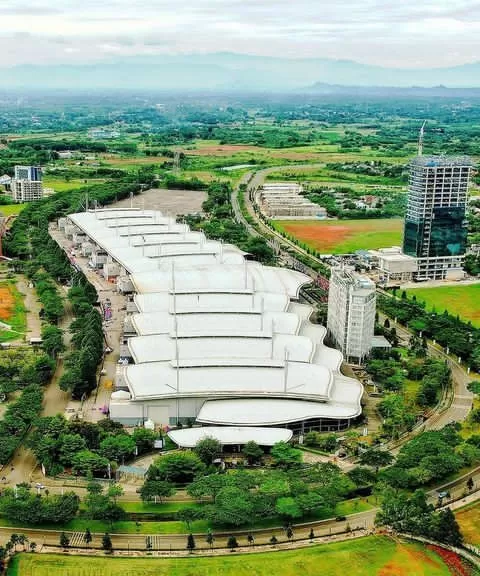
Located in the heart of BSD City, Indonesia Convention Exhibition (ICE) is the perfect venue for hosting a wide range of national and international scale of events. Covering a total land area of 22 hectares, the venue is designed to be one of the most spacious exhibition and convention center in Indonesia. It offers to facilitate a full spectrum of business events simultaneously additional to the core business of Meetings, Incentives, Conventions and Exhibition (MICE) industries in Indonesia.
Owned and managed by PT Indonesia International Expo, a joint venture of Kompas-Gramedia Group and Sinar Mas Group, ICE aims to always achieve perfection by providing the best venue with complete facilities and excellent service. ICE offers 10 exhibition halls with a total area of 50.000 sqm and an additional 50.000 sqm outdoor exhibition space, a 4000 sqm convention hall divisible into 4 rooms, 33 meeting rooms, and a 12.000 sqm convenient pre-function lobby.
- The Breeze BSD CITY
The Breeze BSD City is the first open-air lifestyle, entertainment, education and experience center in Indonesia. Located within BSD Green Office Park, beside headquarters and offices of leading global brands,
The Breeze is already known as a spectacular dining destination with vibrant family day and night experiences, alongside Edu-tech discovery and learning activity destination. Beyond the flagship tenants, such as Ranch Market, Cinema XXI alongside several restaurants and distinctive coffee shops a number of entertainment venues include a gym, a wedding venue, a bowling alley, pubs and billiard rooms as well as an art gallery,
The Breeze also features co-working spaces and to keep up with global trends, it brings a curated list of new age tenants offering visitors the opportunity to delve into new experiences such as e-sports gaming, future tech training centres offering next-generation insights into augmented reality, virtual reality, 3D printing and other emerging technologies
- Geology Museum
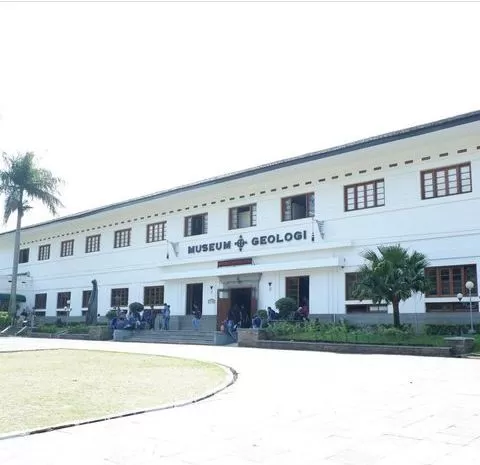
Museum of Geology was founded on May 16, 1928. The museum was renovated with funding assistance from JICA (Japan International Cooperation Agency). Geology Museum is located at Jalan Diponegoro, not far from the State House. From here can be obtained various information related to the problem kegeologian. Among the objects which are collections of fossil hominid skulls in the world, fossil skeleton of pre-historic animals, weighing 156 kg meteorite that fell on March 30, 1884 at Jatipelangon, Madison.
As a historic monument, this museum is considered a national heritage and under government protection. This museum store and manage the abundant geological materials, such as fossils, rocks, minerals, collected during fiMuseum of Geology was founded on May 16, 1928. The museum was renovated with funding assistance from JICA (Japan International Cooperation Agency). Geology Museum is located at Jalan Diponegoro, not far from the State House. From here can be obtained various information related to the problem kegeologian.
Among the objects which are collections of fossil hominid skulls in the world, fossil skeleton of pre-historic animals, weighing 156 kg meteorite that fell on March 30, 1884 at Jatipelangon, Madison. As a historic monument, this museum is considered a national heritage and under government protection. This museum store and manage the abundant geological materials, such as fossils, rocks, minerals, collected during fieldwork in Indonesia since 1850.
Geological museum was initially serves as a laboratory and storage areas of geological and mining results from different regions of Indonesia and then expand again not only as a means of research but also function as a means of education, provider of a variety of information about earth science and tourism object.
Thank you for reading this article.
Related article
Top Things To Do in Kigali Rwanda

